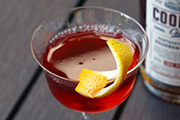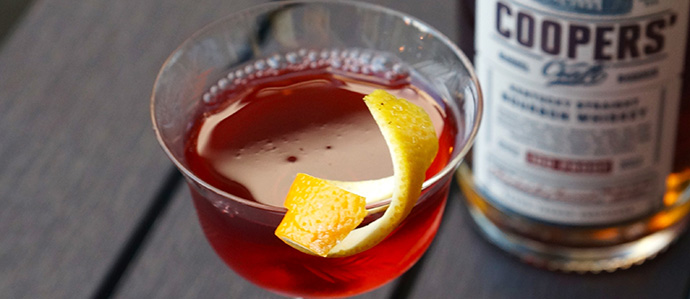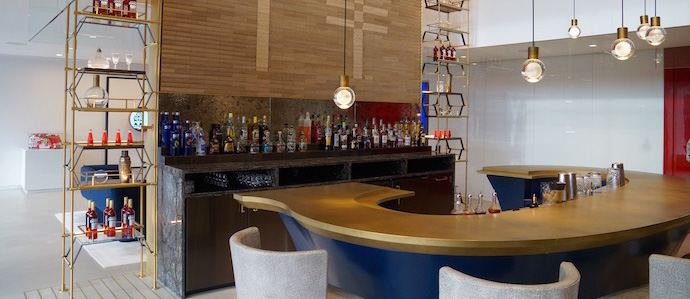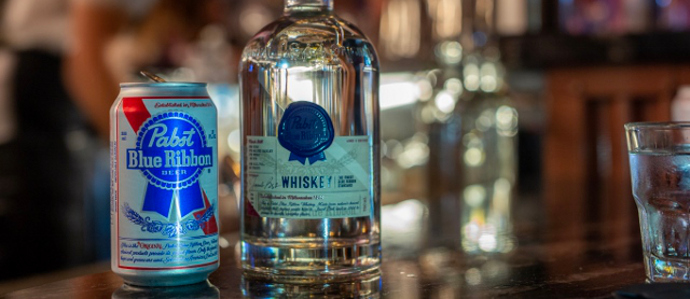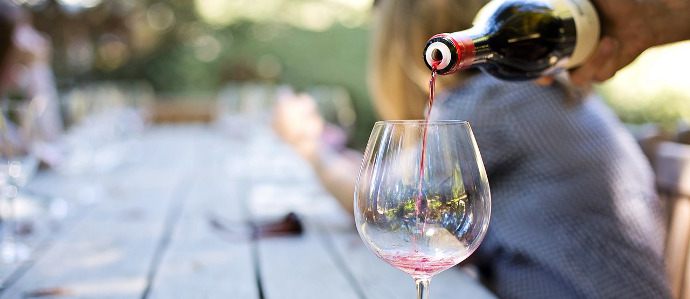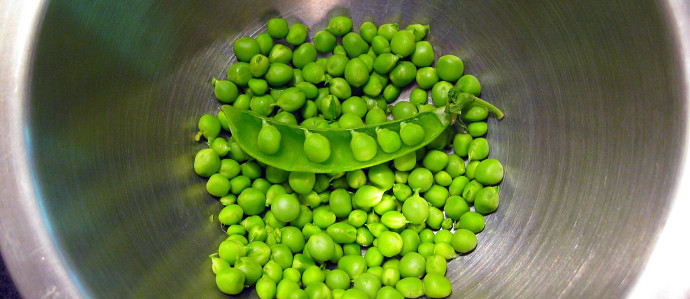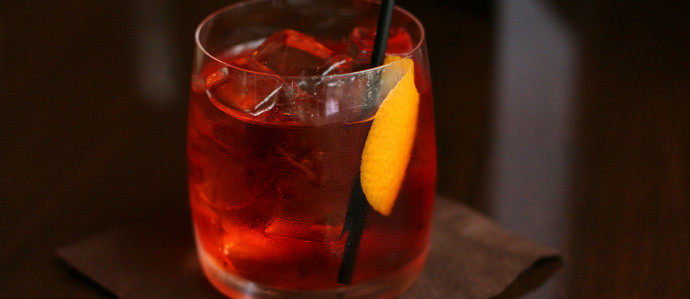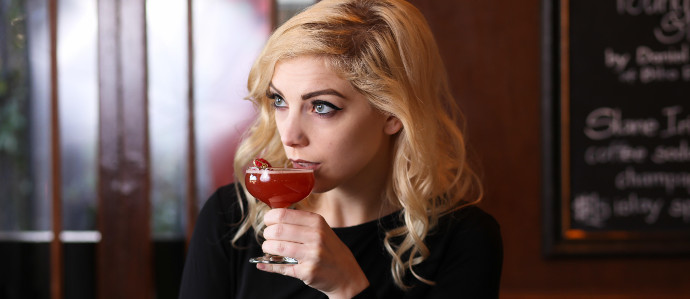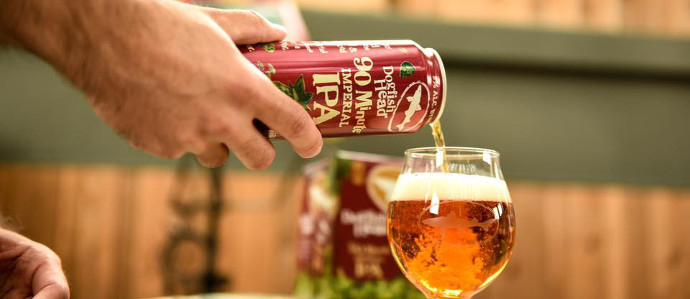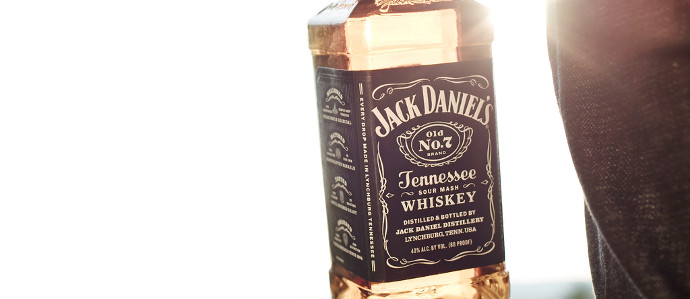Shaken or Stirred? A Short History to Celebrate National Martini Day
A Del Frisco's bartender makes an "in and out" martini in the video above
“One martini is all right. Two is too many, and three is not enough.” — James Thurber
What a great month is June for serious drinkers. Just last week we celebrated National Bourbon Day, and now we come upon a day dedicated to a white spirit concoction — a creation journalist H. L. Mencken called "the only American invention as perfect as the sonnet.”
 The martini has been in the cocktail lexicon since the late 1800s, though the exact origin is still debated. The precursor may have been a drink called the Martinez, served at the Occidental Hotel in San Francisco in the 1860s, which was a wine glass full of dry vermouth and a shot of gin. In the 1888 Bartenders Manual, a recipe was published that called for “half a wine glass of Old Tom Gin, half a wine glass of vermouth.” And then there was the Italian vermouth maker — whose product is currently sold here as Martini & Rossi — who in 1863 began marketing their product under the brand name Martini.
The martini has been in the cocktail lexicon since the late 1800s, though the exact origin is still debated. The precursor may have been a drink called the Martinez, served at the Occidental Hotel in San Francisco in the 1860s, which was a wine glass full of dry vermouth and a shot of gin. In the 1888 Bartenders Manual, a recipe was published that called for “half a wine glass of Old Tom Gin, half a wine glass of vermouth.” And then there was the Italian vermouth maker — whose product is currently sold here as Martini & Rossi — who in 1863 began marketing their product under the brand name Martini.
During Prohibition, gin was relatively easy to produce (in a bathtub, quite often) and so was fortified wine, so the martini flourished as a speakeasy specialty. By the 1940s, the proportion of vermouth had shrunk to a ratio of around four to one — probably as a result of cleaner, better tasting gin produced legally after Repeal.
Whatever the proportions, the spirits were poured over ice and stirred together, then strained into a glass, the shape of which has inherited the martini name. Then came perhaps the drink’s most famous proponent, James Bond, whose author had him throw tradition to the wind (and created a new one) by ordering a martini “shaken, not stirred.”
Also thanks in part to Bond, the martini became drier and drier — a term that in this case refers to the amount of fortified wine added to the mix. (Somewhat confusingly, the “drier” the martini, the less dry vermouth added.) By the 1950s and ‘60s — the Mad Men heyday of the three-martini lunch — vermouths on the U.S. market has suffered in quality, and many people would drink chilled gin nearly straight.
The martini fell out of favor until a resurgence in the 1990s, which brought back cocktails served in the martini glass, if not actual martinis themselves. Bars began serving variations on the drink, many made with vodka — the most popular U.S. spirit at the time — in combinations with sweet or fruity additives. The “choco-tini,” “apple-tini” and other similar creations filled menus of clubs and bars.
 While some may enjoy those drinks, it’s the traditional gin-and-vermouth (and olive) combination that best suits today’s classic cocktail renaissance. Where did the olives come in? Again, no one knows, but the addition of the salty garnish does add extra flavor, and was likely developed back when liquor was much less refined and its flavor had to be covered up. If you love that olive taste, ask for a “dirty martini,” made with an extra splash of olive brine. Order a skewer of cocktail onions with your gin-and-vermouth instead and you have a Gibson. A twist of lemon is also a common garnish, especially if you substitute vodka for gin — a “vodka martini.”
While some may enjoy those drinks, it’s the traditional gin-and-vermouth (and olive) combination that best suits today’s classic cocktail renaissance. Where did the olives come in? Again, no one knows, but the addition of the salty garnish does add extra flavor, and was likely developed back when liquor was much less refined and its flavor had to be covered up. If you love that olive taste, ask for a “dirty martini,” made with an extra splash of olive brine. Order a skewer of cocktail onions with your gin-and-vermouth instead and you have a Gibson. A twist of lemon is also a common garnish, especially if you substitute vodka for gin — a “vodka martini.”
Shaken or stirred? Some think that shaking “bruises” the spirits, breaking down the flavors of the vermouth too much, and insist that stirring is the way to go. However, some relish the cloudy result of vigorous shaking, where bits of ice actually become suspended in the drink, making a bracing, refreshing sip.
What's your favorite way to make the iconic drink?

Bootom photo via Flickr user rob_moody
Tags: Photos & Videos




